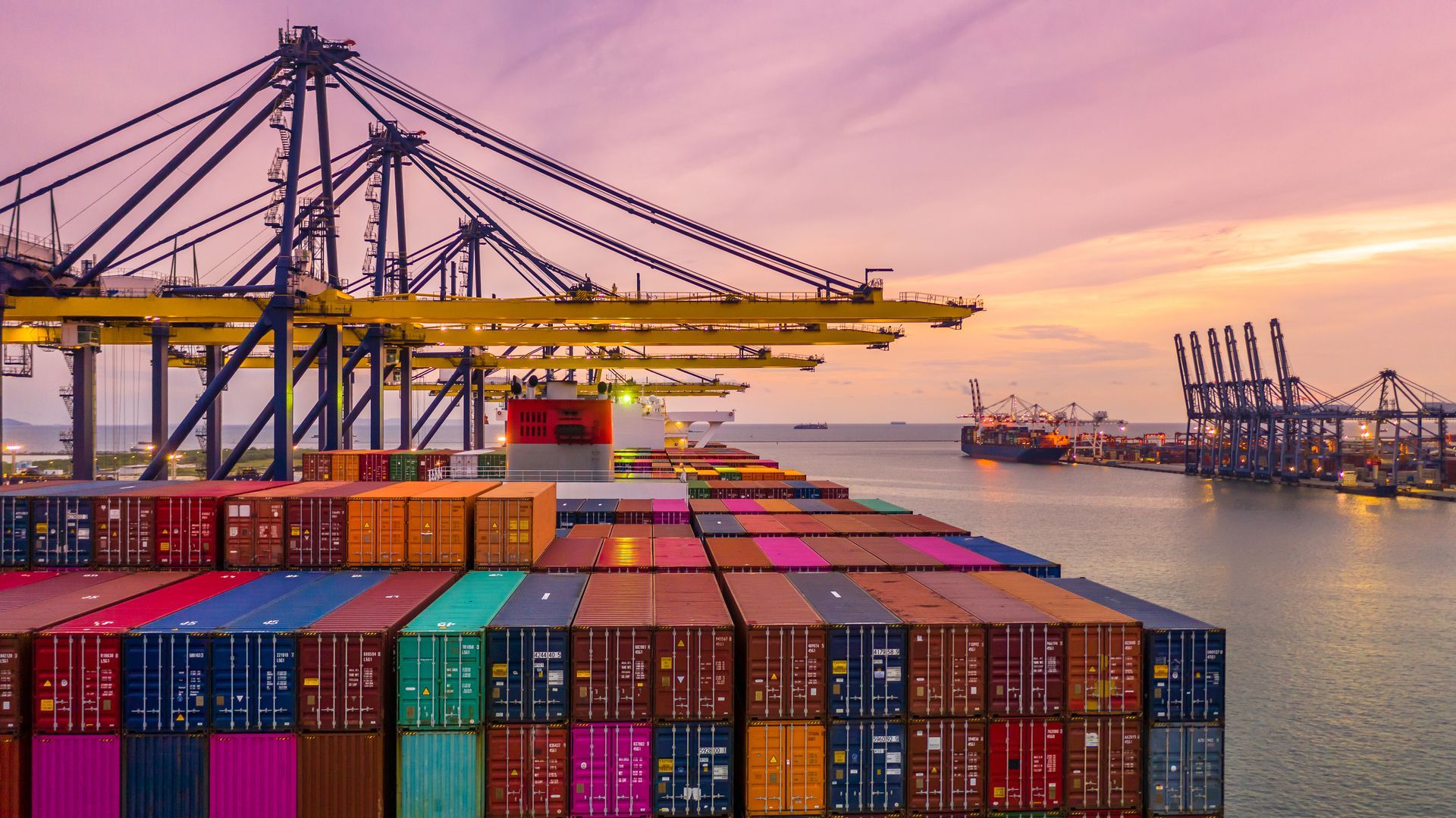Supplies Made Simple™: Talk to our Sales Team today!
Navigating 301 Tariffs and Its Potential Impact On Your Supply Chain
Navigating 301 Tariffs and Its Potential Impact On Your Supply Chain

The U.S. has announced significant tariff increases on Chinese imports under Section 301, marking another phase in ongoing trade policy changes. These tariffs were initially introduced to address trade practices concerns as intellectual property concerns. We saw a sharp rise on September 27, 2024, with further increases planned for 2025 and 2026. Industries like electric vehicles (EVs), medical supplies, renewable energy and more will be directly impacted.
For U.S. businesses, this means higher costs and potential supply chain challenges, especially for those reliant on imports from China. Concentric Health Alliance offers products from over 40 countries, including domestic. In this post, we’ll break down what’s happening, which sectors are most affected, and how Concentric Health Alliance (CHA) is stepping up to help businesses navigate these changes with the supplies we offer.
What Are Section 301 Tariffs?
Section 301 tariffs were first introduced in 2018 as part of the U.S. government's effort to address unfair trade practices, particularly around intellectual property theft and forced technology transfers. Over time, these tariffs have become a cornerstone of the U.S. trade strategy with China, aiming to reduce dependence on Chinese imports—especially in industries vital to U.S. national security and economic interests.
Around September 27, 2024, the USTR rolled out new tariff increases on a wide range of products. These changes will have far-reaching effects across several industries, with even more increases planned for the next two years.
Why Section 301 Tariffs Are A Big Deal
Many argue that the aim of these 301 tariffs is to boost U.S. domestic production and lessen our reliance on imports from China. But the reality is that domestic products are still priced significantly higher than imported products. These increased costs will likely throw a wrench into supply chains and inflate operational expenses for several U.S. companies that depend on these imported goods.
Take the healthcare industry, for instance. With essential medical supplies like nitrile gloves and medical face masks becoming more expensive, we might see a ripple effect impacting not only the pricing but also what's available.
Example: The tariffs on Nitrile Exam Gloves is increasing to 50% in 2025 and 100% in 2026.
Impact on U.S. Businesses and Supply Chains
As these tariffs roll out, U.S. businesses that lean on Chinese imports will encounter two significant hurdles: rising costs and potential supply chain disruptions. With tariffs on products like electric vehicles, batteries, and medical supplies skyrocketing, companies will need to get creative about maintaining their profitability while managing supply chains efficiently.
- Supply Chain Disruptions: Companies that have built their supply chains around Chinese suppliers will need to rethink their strategies. Finding alternative sources or diversifying suppliers can help lessen the blow, but this transition might not happen overnight and could lead to temporary hiccups.
- Increased Costs: Businesses importing goods hit by the new tariffs will face a sharp spike in expenses. This is particularly alarming for industries like healthcare, where price increases on vital supplies—like syringes and gloves—can have widespread consequences.
- Mitigation Strategies: To tackle these challenges head-on, businesses should adopt new strategies to lessen the financial impact of these tariffs. This might include applying for tariff exclusions, seeking domestic or other country alternatives, renegotiating contracts with current suppliers or setting the entity up with the ability to get refunds on VAT taxes.
We are here to help you shift your supply needs to other countries and reduce the impact of these new tariffs.
Key Industries and Products Affected

The industries facing the steepest impact from the new Section 301 tariff hikes include electric vehicles (EVs), medical supplies, renewable energy, and critical minerals. Let’s dive into how these tariff increases will affect each sector:
- Electric Vehicles (EVs): This industry may see significant tariff hikes, rising from 25% to 100%, impacting manufacturers and consumers, particularly those relying on Chinese components. This could lead to higher prices and slow adoption of electric cars in the U.S.
- Batteries (non-EV lithium-ion): An increase in tariffs from 7.5% to 25% will significantly impact manufacturers across various sectors that utilize these batteries in their products.
- Medical Supplies: Healthcare providers and distributors may face increased costs due to a 50%-100% rise in tariffs on critical items like respirators, face masks, syringes, needles and some glove types.
- Renewable Energy: Tariffs on solar panels will jump from 25% to 50%, raising costs for the renewable energy sector at a time when clean energy initiatives are expanding.
- Critical Minerals and Equipment: Products like steel, aluminum, and ship-to-shore gantry cranes will also face higher tariffs, disrupting industries that rely on these essential materials.
By breaking down the effects on these key sectors, it becomes clear that the impact of the tariff increases will be wide-reaching, influencing prices, supply chains, and the broader economy. Businesses in these industries will need to adapt, either by seeking alternative suppliers, reconfiguring their operations or absorbing higher costs that may be passed on to consumers.
This reality reinforces the need for agile strategies to navigate the complexities of international trade in a constantly evolving global market. This is especially important for our customer who need medical supplies and healthcare essentials to do their jobs effectively.
If you are concerned with how this could affect your business, CHA has the ability to help you find an approach to keeping costs down and ensuring access to essential products.
How Concentric Health Alliance (CHA) is Responding
At
Concentric Health Alliance, we’re here to help our clients navigate these turbulent waters. As the Section 301 tariffs rise, CHA is rolling out several strategies to ensure our customers continue to receive the essential products they need at competitive prices.
How CHA Offsets Tariff-Driven Costs
We know tariff increases can hit budgets hard. To help manage these costs, we leverage bulk purchasing, cost-sharing options and efficient distribution channels to save you money.
Our logistics optimizations allow us to pass on cost savings, minimizing the impact of tariffs on your bottom line. We are also working with our partners to help them create a strategy to shift supply tactics to reduce financial impact.
Our Strategy for Securing a Reliable Supply
As tariffs put pressure on imports, CHA is proactively working with alternative suppliers to keep your supply chain steady. We’ve invested in extra inventory of high-demand items like medical supplies, disposable paper goods, DMEs, etc so you have what you need, when you need it, with minimal disruption.
Addressing Customer Concerns Regarding 301 Tariffs

At Concentric Health Alliance, we’re here to keep your supply chain steady and secure—even with rising tariffs. Our emergency sourcing and backup inventory plans ensure you’ll always have access to critical supplies. When it comes to quality, we’re uncompromising: each supplier is rigorously vetted for compliance and safety, so you get only the best, no matter the source.
Wondering why now’s the time to rethink your strategy? Partnering with CHA now means staying ahead of future cost spikes and delays. Our clients have already strengthened their supply chains with our proactive planning, setting them up to handle whatever comes next.
And if you think your current suppliers are optimized for tariffs, we offer even more—customized strategies that add long-term resilience and value beyond standard solutions.












